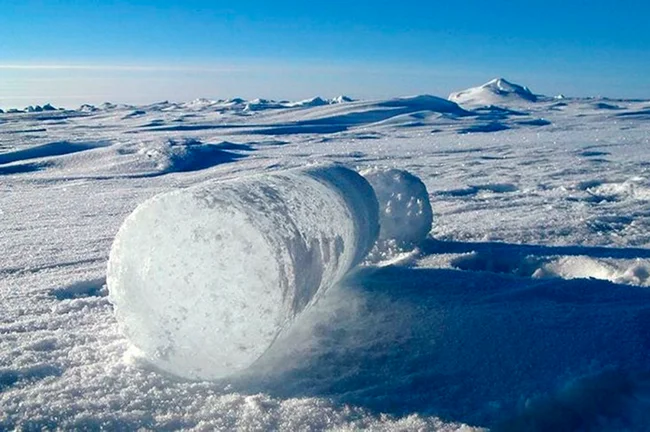Why did a lake in Antarctica surprise scientists? (2 photos)
What questions did scientists explore a lake in Antarctica have? 
Humanity's understanding of life is far from complete. Many traditional attitudes and assumptions about the conditions under which life is possible are being shattered by new discoveries of science.
This is not an idle question, not useless research to satisfy the curiosity of scientists.
The possibilities of colonizing other celestial bodies, which have been actively discussed in recent years, force us to understand in more detail where life is possible and where it is not.
Recently, an Antarctic lake was able to revolutionize ideas about what conditions are necessary for living beings to exist.
What did biologists discover at Lake Vida?
In what extreme conditions is life possible?
Life where there is no life
In 1958, scientists discovered the subglacial Lake Vida in Antarctica. New Zealand discoverers from the University of Wellington named the lake after the dog of the legendary Antarctic explorer Ernest Shelkton, who died during his failed expedition.
The water in Lake Vida froze thousands of years ago, becoming covered with a huge crust of ice.
It was believed that in such conditions of constant deep “freezing” life was impossible.
But in the early 2000s, a team of scientists suddenly managed to extract living bacteria from the ice that covered the shores of the lake.
This means that life is possible even in eternal ice!
Without stopping there, scientists went further. A few years later, they decided to look for life in Lake Vida itself.
Life under the ice
To get to the “water,” scientists had to drill through a total of 950 meters of ice, at least 20 meters thick. 
The resulting composition can only be called water conditionally.
Freezing led to the fact that the water turned into ice, and underneath it remained a saturated “brine” - a solution of nitrates and nitrites, nitrous oxide and other elements.
But scientists were surprised to discover that there is life in it too.
Several dozen different colonies of bacteria and microbes were found in the waters of the lake. These frost-resistant microorganisms in unfavorable conditions slowed down their metabolism as much as possible, but did not stop living and reproducing.
Then a team of scientists led by Professor Alison Murray decided to test these Antarctic “walruses” for survival in artificial conditions.
They were placed in an environment where the temperature was gradually lowered.
Microorganisms from Lake Vida “lasted” until minus 14 degrees. even at this temperature they remained alive, their protein synthesis continued.
Alison Murray believes this is a breakthrough in the ability to simulate situations on other planets. Icy celestial bodies on which life was considered impossible may well have the same subglacial lakes and cavities teeming with frost-resistant life.
Millennia of isolation
It remains a mystery to scientists how microorganisms were able to survive in the subglacial lake.
According to experts, the lake has not had “contacts” with the atmosphere and sunlight for at least 2,800 years. How multiple populations of bacteria managed to survive in such isolation is unclear.

